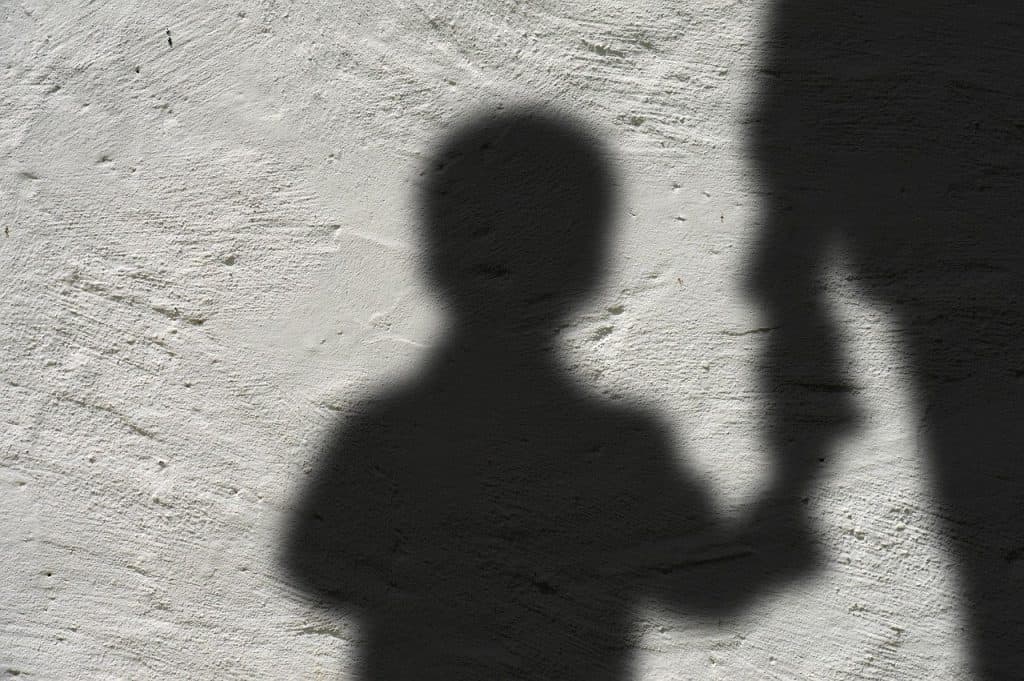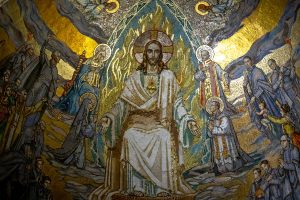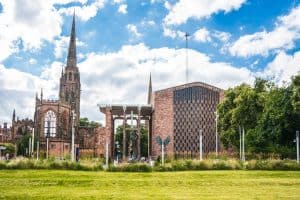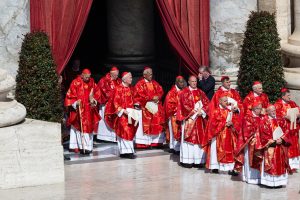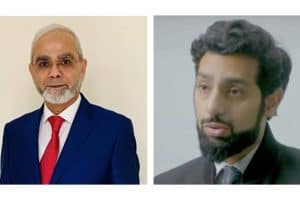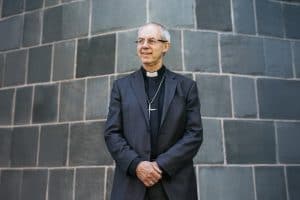By Tim Wyatt
How does safeguarding work now in the Church of England?
Every parish church, cathedral, church plant or other local church body has a safeguarding policy and a volunteer appointed to act as safeguarding officer. They are supposed to be a first point of contact for disclosures of abuse, promote good practice and training, and uphold the policies.
Then, each diocese also has a diocesan safeguarding adviser (DSA). This person, often with a background in social work or the police, is responsible for leading safeguarding training and advice in the diocese. They, and whatever team the diocese has, may manage directly cases arising from their area and liaise with other statutory agencies such as the police or social services if a particular case involves a priest or church officer. There has been controversy around the exact powers of the DSA and the Independent Inquiry into Child Sexual Abuse has recommended they become diocesan safeguarding officers. This would mean they can act independently of the bishop if there is a disagreement over how to handle a case or whether to refer it upwards. The church is now implementing this change.
Nationally, the CofE has a National Safeguarding Team (NST), based in London. The NST replaced a previous single part-time national safeguarding adviser. The team is responsible for policy development, training, investigation of casework and engaging with survivors. It has rapidly grown in budget and staffing in recent years to cope with demand. It is led by the CofE’s national director of safeguarding, currently Alexander Kubeyinje. Since that role was created in 2019, nobody has yet lasted more than two years in the post.
Above the NST is the National Safeguarding Steering Group (NSSG), which provides strategic oversight and has authority delegated from the House of Bishops to issue guidance and policy in its name. This draws in bishops, senior clergy and lay officers from the upper echelons of church hierarchy. Every few years the NSSG oversees the publication of a revised safeguarding policy: the one currently in force is Promoting a Safer Church, from 2017.
Under safeguarding rules passed by the General Synod in 2016, all clergy, church officers, lay workers and churchwardens are obliged to follow the rules laid out in it, unless there are “cogent” reasons for not doing so. Failure to follow safeguarding policy can lead to disciplinary action.
However, there is a blizzard of other documents, guidance and reports being constantly issued which supplement this formal policy. Most of these can be found on the Church of England’s website here.
The NSSG is chaired by the lead bishop for safeguarding, a role held for about three years at a time. The current lead bishop is Joanne Grenfell, the Bishop of Stepney. She is supported by two assistant bishops for safeguarding.
The National Safeguarding Panel, set up in 2014, offers advice on safeguarding policy and ensures the CofE is meeting best practice. It is also supposed to scrutinise how the church is doing at promoting safeguarding, responding to disclosures and supporting survivors. Its membership includes some clergy, but also abuse survivors and safeguarding experts. It is independently chaired by Meg Munn, a former government minister and social worker.
The Independent Safeguarding Board (ISB), set up in 2021, was intended to be another arms-length body offering scrutiny and challenge to the internal safeguarding authorities in the church. It had three members, all outside of the church, who had the authority to issue reports, review the handling of specific cases, and offer advice. However, it collapsed into acrimony in June 2023 after its first chair had to resign over data breaches, and the interim replacement of her by Ms Munn from the National Safeguarding Panel was rejected by the other board members. In June, the Archbishops’ Council, which funded and employed the ISB, decided to dismiss the remaining members and start from scratch after concluding that relationships had broken down irretrievably.
Timeline
Society first began to be aware of the abuse of children in the 1950s and 1960s, partly thanks to pioneering paediatricians in the United States who gathered data on the perturbing regularity of children arriving at hospitals with broken bones. A breakthrough case in the UK was Maria Colwell, who was starved, beaten and then killed by her stepfather in 1973, causing public outcry and official inquiries.
Into the 1980s, attention expanded to include sexual abuse of children, previously presumed to be rare and mostly harmless. Esther Rantzen set up the ChildLine telephone helpline after being inundated with accounts of abuse from children sent into her TV programme That’s Life in 1986, and received more than 50,000 calls in the first 24 hours.
In 1988 a significant judicial inquiry was held into the removal of children from their families in Cleveland, north-east England, after two doctors diagnosed that children had been anally raped, a decision which has been both contested and defended. The Cleveland inquiry was a landmark examination of the issue and recommended joint police and social services investigations into all allegations of child abuse.
1988 First real consideration of child abuse for the church comes when a private member’s motion passed by the General Synod prompted a report by the House of Bishops.
1989 Parliament passes the Children Act, a landmark piece of legislation which establishes that the welfare of a child is the state and court’s paramount concern, overriding, if necessary, the parents’ wishes. It creates much of the current legal framework around child protection.
1992 The Bishop of Gloucester, Peter Ball, is arrested and cautioned by police for indecent assault. A behind-the-scenes campaign by high-profile religious, legal and political figures helps Ball to escape more serious charges and prosecution, although he is made to step down as bishop.
1993 Primates (head archbishops) of the Anglican churches across the world issue a joint statement decrying sexual abuse and exploitation of women and children, including within the church, and call on Anglicans worldwide to stamp it out.
1993 The Home Office publishes guidelines on the child protection policies that all voluntary organisations should adopt, including recruitment of volunteers and how to handle allegations.
1995 The church introduces its first policy on child abuse. At 15 pages long, the policy reflects the Home Office guidelines and recommends each diocesan bishop appoints someone to advise them on child abuse and ensure good practice is being observed in the diocese. There is no way yet to check criminal records, but those taking up new posts as priests or lay workers are for the first time asked to declare any involvement in criminal proceedings.
1999 The church’s policy is revised, toughening up the still-voluntary declarations people have to make upon recruitment and creating an automatic defrocking of priests who are convicted of the most serious crimes involving injury or assault to a child.
2001 Terence Banks, a volunteer steward at Chichester Cathedral, is convicted of 32 sexual offences against 12 boys, which took place over 30 years. All but one of his victims he met through his cathedral work. This leads to the first “lessons learnt” safeguarding review, led by social worker and consultant Edina Carmi. Her report would be completed in 2004 but not published until a decade later.
2002 The first central safeguarding liaison group is set up, chaired by the newly appointed lead bishop for safeguarding. Janet Hind, the wife of the Bishop of Chichester, is appointed the church’s first national child protection officer.
2003 The Sexual Offences Act is passed, expanding the range of sexual offences against children that can be prosecuted.
2003 Clergy guidelines are published that require every priest to have training in child protection. The guidelines compel all reports of abuse to be referred to appropriate agencies.
2004 Protecting All God’s Children, the third safeguarding policy, is published. This has more force and all dioceses and parishes are obliged to adopt it as the foundation of their own local policies. It is more than 50 pages long and goes into much more detail on how to recognise abuse, handle disclosures, ministering to those who may pose a risk to children, and recruitment via the new Criminal Records Bureau procedures.
2006 The first policy for safeguarding adults, Promoting a Safer Church, is published.
2007 Peter Halliday, a choirmaster in Guildford, is convicted of child abuse. He admits that in 1990 he confessed to his crimes to the church but had only been made to stand down. He later led another choir with children.
2008 Colin Pritchard, a vicar in Bexhill, East Sussex, is convicted of sexually abusing two boys, and allegations also emerge of other paedophile clergy in the same diocese of Chichester. Partly in response to this and the Halliday case, the House of Bishops orders a review of all past cases of abuse across the CofE.
2010 The church’s first past cases review is published, having examined 40,000 files on clergy, parishes, lay church officers, and retired priests. Eleven cases identified require formal action such as asking the police to reinvestigate or adding a cleric to the barred list of clergy. A further two cases where statutory action is not possible are deemed to require formal disciplinary church action.
2010 Protecting All God’s Children is revised, marking the church’s fourth safeguarding policy document. It substantially rewrites the sections about responding to concerns and on safer recruitment.
2011 The Diocese of Chichester’s senior leadership falls into bitter internal conflict over safeguarding, with the diocesan safeguarding adviser resigning and a junior bishop, Wallace Benn, the subject of a formal disciplinary complaint over his poor handling of safeguarding concerns by the diocese’s own safeguarding advisory group. As a result, Rowan Williams, the Archbishop of Canterbury, orders a rare official investigation, known as a visitation, into the diocese, which gives him temporary power to oversee safeguarding there.
2011-13 Newspaper reports expose the first examples of grooming gangs and later the extent of Jimmy Savile’s lifetime of abuse. As a result, there is a huge rise in people reporting abuse, especially from the past.
2012 The visitation ordered by Rowan Williams in Chichester — now known to be the home diocese of a disturbingly large number of child abusers — reports back. It finds that the diocese was very slow to address allegations of abuse and failed to respond appropriately to priests and others known to have been convicted or investigated for abuse. The visitation report includes recommendations for the national church, criticising the uneven spread of safeguarding training and the overworked and under-resourced central CofE safeguarding team.
2013 The Robert Waddington case is revealed in the press. Waddington was Dean of Manchester Cathedral from 1984 to 1993, and it emerged that at the turn of the millennium a number of complaints of abuse against him were made to the church. David Hope, who had then been Archbishop of York, had decided to not pass these on to the police.
2014 The National Safeguarding Panel is established. Members include survivors, safeguarding experts, and serving clergy. Its role is to offer advice on safeguarding policy and ensure the CofE is meeting best practice, and also to scrutinise how the church is doing at promoting safeguarding, responding to disclosures and supporting survivors.
2014 A review of the Waddington case points to systemic failures in how senior church officers dealt with disclosures of his abuse, failing to pass them on to the police.
2015 Independent audits by the Social Care Institute for Excellence of each diocese’s safeguarding procedures are ordered by the church. These are gradually published over the following years.
2015 Jeremy Dowling, a teacher and former staffer at the Diocese of Truro, is jailed for abusing boys between 1959 and 1971. Several bishops in his diocese over the years had been told about his abuse but did nothing.
2015 Peter Ball, the former bishop cautioned in the 1990s for indecent assault, is jailed for 32 months after admitting abusing 18 young men while serving in the church. It emerges during the trial that dozens of senior figures, including cabinet ministers, royals and judges, supported him when first arrested in the 1990s and helped to persuade the police not to pursue him too vigorously. One of his victims killed himself in 2012 shortly before the second police investigation began. George Carey, the former Archbishop of Canterbury who had overseen Ball’s first arrest and caution in the 1990s, maintained his support for the former bishop throughout the police inquiry. King Charles, then the Prince of Wales, was friendly with Ball and had frequently written to him. The prince’s staff contacted the police during the investigation, via the Sussex chief constable, to check if any of these letters were part of their inquiries and could be embarrassing.
2015 As a result of a complaint made to the Chichester diocese in 2013, an anonymous woman known only as “Carol” is given compensation and an apology. Carol claimed she was abused as a child in the 1940s and 1950s by George Bell, then Bishop of Chichester, a famous and admired figure in Anglican history who died in 1958. A campaign to clear Bell’s name is launched by admirers furious the church had tacitly accepted he was an abuser based on a single account, more than 60 years later.
2015 The National Safeguarding Team (NST) is set up as a central permanent body of safeguarding staff to replace a previous single part-time national safeguarding adviser. The NST is responsible for policy development, training, investigation casework and engaging with survivors.
2016 A “lessons learnt” review into the case of Garth Moore, a leading church lawyer and child abuser, is published. The review is especially critical of how many senior church figures, including bishops, had been told about the abuse by the survivor over many years but failed to keep records or act on the disclosures. The survivor, known as Gilo, has since become a prominent campaigner for safeguarding reforms in the church. Moore died in 1990.
2016 The Archbishop of York, John Sentamu, and four other serving bishops are accused of misconduct in formal complaints by an abuse survivor — also an Anglican priest — who claimed they did not act on his disclosures about being raped by a vicar, Trevor Devamanikkam when aged 16. The complaints are all dismissed as they fall outside the 12-month time limit allowed. Devamanikkam killed himself the day before his trial on abuse charges was due to start in 2017. A review ordered by the church into the case has yet to be published after a series of delays.
2016 The National Safeguarding Steering Group is set up, and the House of Bishops delegates to them responsibility for strategic leadership on safeguarding nationally.
2017 Dame Moira Gibb publishes An Abuse of Faith, her review into the handling of the Peter Ball case, concluding that church figures effectively colluded with the bishop over many years to protect him from investigation and prosecution.
2017 The John Smyth case is revealed by Channel 4 News. Smyth, a barrister and senior leader in the Iwerne Trust Christian youth camps in the 1970s and 1980s, had violently beaten teenage boys from the camps in his garden shed, including many who had grown up to be prominent Christian figures, such as the Bishop of Guildford, Andrew Watson. Gradually it emerged that Smyth’s abuse had been known about by some within the camps and other church bodies since the early 1980s, but he was merely moved on overseas, where he set up similar camps in Zimbabwe. George Carey, the former Archbishop of Canterbury, had his permission to officiate in the church temporarily removed in 2020 because of his failure when in post to properly handle allegations against Smyth, who died in 2018.
2017 The fifth safeguarding policy, Promoting a Safer Church, is published. Among its new policies are a requirement for every parish to appoint a safeguarding officer. About the same time, several new guidance and reports are also published, covering risk assessments, clergy discipline, the responsibilities of office-holders, tweaks to how diocesan safeguarding advisers work and their powers, and safer recruitment, as well as fresh material covering less usual church settings, such as new church plants, cathedrals and theological colleges.
2017 A review of the George Bell case is published, concluding that the church rushed to judgment in deciding Carol’s accusations against George Bell were true and had not given enough consideration to the rights of the long-dead bishop.
2017 Cheshire police announce that following an investigation into allegations of child abuse against the former Bishop of Chester, Victor Whitsey, who died in 1987, they would have sought to interview him if he were still alive. The current Bishop of Chester and Archbishop of York apologise, and order a review of the case.
2018 Meg Munn, a former Labour MP, government minister and social worker, is appointed as the first independent chair of the National Safeguarding Panel.
2018 An independent review into the Past Cases Review (2007-09) is published, concluding it was inconsistent and too limited in scope.
2019 After auditing the safeguarding work of each of the church’s 42 dioceses, the Social Care Institute for Excellence issues an overview report, which calls for safeguarding to be centralised and individual diocesan bishops stripped of their oversight. The report is broadly positive, praises the substantial boost to the National Safeguarding Team’s budget and staffing, and concludes there had been significant improvements of policies and training, but criticises the lack of centralised control. The church’s safeguarding authorities rejects the recommendation to employ all diocesan safeguarding advisers nationally.
2019 Melissa Caslake, formerly head of children’s service for several central London boroughs, is appointed the first national director of safeguarding,
2019 A second past cases review, examining historic files held by all dioceses, was ordered by the church hierarchy, after concerns were raised that the first such exercise held between 2007 and 2009 had not been as thorough as possible.
2019 The Daily Telegraph reports that Jonathan Fletcher, a high-profile former vicar in southwest London, had spent decades abusing younger men in his ministry, including bullying, coercive control, naked massages, hitting with shoes and ice baths, and some alleged sexual abuse. Fletcher was also a key speaker and leader at the same Iwerne Trust camps where John Smyth had worked.
2019 The Independent Inquiry into Child Sexual Abuse (IICSA) publishes its reports looking into the Diocese of Chichester and Peter Ball, which it had chosen as case studies during its bigger investigation into the Anglican Church.
2020 IICSA publishes its full report into the Church of England, after four years of public hearings and examining tens of thousands of documents. It identifies 390 convicted offenders associated with the CofE going back to the 1940s, but adds this is almost certainly not the full scale of the problem. It accuses the church of focusing on looking after perpetrators, not victims, and for too long vastly under-resourcing and prioritising child protection. The church also protected its reputation over admitting errors, failed to provide pastoral support and redress, and was choked by clericalism and deference. Among its key recommendations were to replace each diocese’s safeguarding adviser with a strengthened role of safeguarding officer, who could act independently of the bishop if required. It also recommended the clergy discipline procedure be overhauled, especially removing the 12-month time limit, and the power to permanently defrock priests be reintroduced. Most of the recommendations have been accepted by the church and are in the process of being implemented.
2020 The General Synod votes in favour of setting up a redress scheme to compensate victims of abuse. An interim scheme is set up to bridge the gap while the long-term project is established.
2020 A bitter row between Martyn Percy, the Dean of Christ Church, Oxford, and senior academics at Christ Church College (which he also leads) ends with safeguarding complaints made against him. Over several years Percy is complained against and investigated by the church but cleared each time.
2021 The Jonathan Fletcher “lessons learnt” review is published by independent church safeguarding charity Thirtyone:eight. It concludes that many in the church knew about Fletcher’s abuse before news reports emerged in 2019 and very little action was taken to stop him.
2021 Yet another body is set up, the Independent Safeguarding Board. All its members are independent of the church and its role is to hold the CofE to account over safeguarding failures and bad practice.
2022 PCR2, the second trawl through diocesan archives to check all clergy and previous cases of safeguarding concerns, reports back. It found 383 new cases that needed fresh action by today’s safeguarding standards. Of those, 242 related to members of the clergy, 53 to other church officers, and 41 to volunteers working with children.
2022 The final IICSA report is published, with a headline recommendation that the government legislates to introduce mandatory reporting of child abuse disclosures. This would have particular problems for the church, in the context of confession. Priests are forbidden from disclosing to anyone else anything that is admitted to during formal confession sessions. A committee to examine the problem in more detail was set up by the church.
2023 News reports lead to the suspension of Mike Pilavachi, a high-profile Anglican priest and former leader of the internationally renowned Soul Survivor youth festivals for almost 30 years. He is accused of inappropriate behaviour, including semi-naked massages, with young men on his church’s internship scheme. Gradually reports come out indicating other senior figures in the Soul Survivor movement may have been aware of the allegations for years but done little about them.
2023 The Independent Safeguarding Board (ISB) collapses into acrimony over several issues. Maggie Atkinson, who chaired the board, repeatedly broke data protection rules regarding emails from survivors and eventually resigns. The remaining two members then fall out with the Archbishops’ Council, which ultimately employs them as arms-length contractors, over their role and responsibilities. One of its first reviews, into the Martyn Percy case, is then taken away by the church. Then the church appoints Meg Munn, who chairs the National Safeguarding Panel, as an interim new chairwoman for the ISB, which survivor advocates and the other ISB members objected to because she is deemed not independent enough. Finally, the Archbishops’ Council dissolves the entire board after concluding relationships have broken down so badly it needs a fresh start with new membership. This is the subject of strong criticism both inside and outside the church.
2023 July: Synod descends into chaos during the session on the safeguarding debacle. The Archbishops’ Council members gave an account of what had happened to lead to the sacking of the two ISB members, Jasvinder Sanghera and Steve Reeves. They were watching from the public gallery and their supporters forced synod to hear their side of the story, in a fractious moment that saw standing orders suspended. The interim chair Meg Munn, who had been asked to stay on temporarily until a new structure was created, was also there but did not speak. Days later, she resigned with immediate effect saying the Archbishops’ Council was slow to listen to safeguarding experts and the Archbishop of Canterbury had undermined her.
2023 20 July: Professor Alexis Jay, the former chair of the Independent Inquiry into Child Sexual Abuse, IICSA, and the former IICSA secretary John O’Brien, agreed to develop proposals for a fully independent safeguarding structure in the Church of England
2023 12 December: Barrister Sarah Wilkinson’s review of the Church of England’s Independent Safeguarding Board, following the termination of contracts for two members in June and the resignation of the third days later, found the root cause was a flawed design rushed through at its inception, which left roles ill-defined, leading to misunderstanding, personal conflict and entrenched positions in disputes.
2024 21 February: Prof Alexis Jay’s report “The Future of Church Safeguarding” makes criticism of the CofE’s surrent system on seven key areas including inconsistent systems across all 42 dioceses, failure to collect data, and lack of independent scrutiny. It recommends two new charities should be set up to deliver and scrutinise safeguarding operations, and they should be entirely separate from the church. It says the current safeguarding system is “flawed and cannot be sufficiently improved whilst it remains within church oversight” and needs to fundamentally change to restore the confidence of victims, survivors and clergy.
2024 24 February: General synod agrees to consult those currently working in safeguarding roles and come back with a plan to implement the Jay report.
(last updated Feb 2024)

